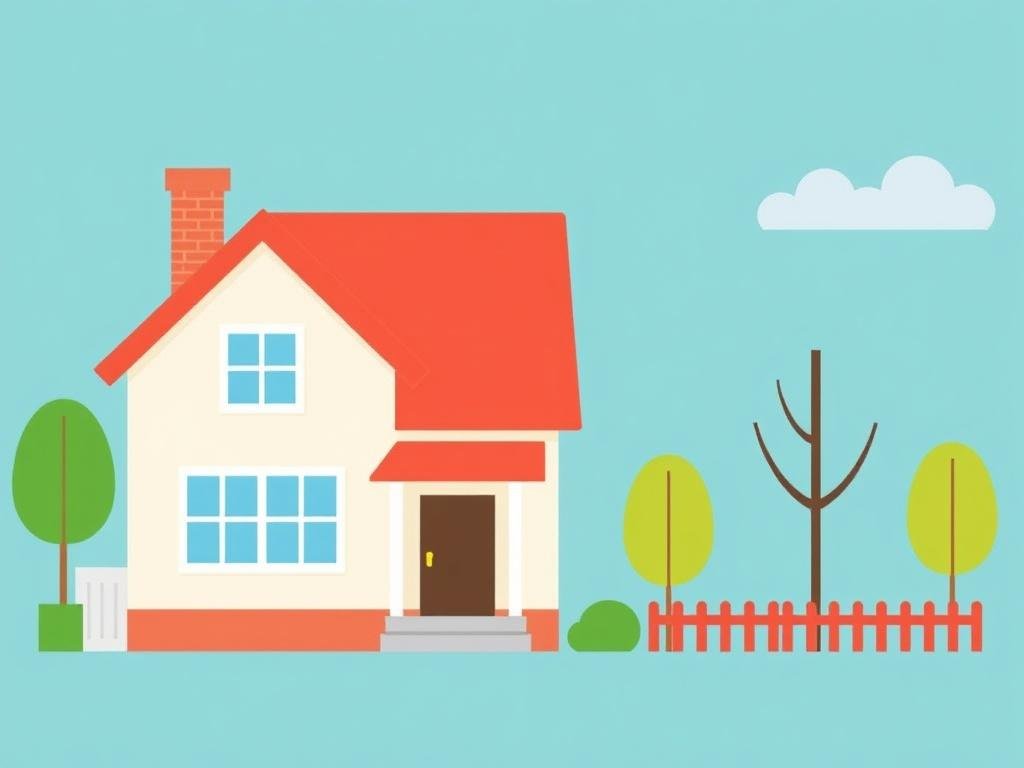Buying a home is one of the most significant financial decisions you will ever make. It involves a careful balance of finding the right property, understanding your budget, and securing the best possible financing. Home loans are the backbone of this process, but navigating the complexities of interest rates, loan terms, and qualification requirements can feel overwhelming. Whether you’re a first-time homebuyer or someone looking to refinance, understanding how home loans work and how to manage financing can save you money and ease your worries. In this article, we will guide you step-by-step through everything you need to know about home loans, with a special focus on how interest rates impact your financing options.
What is a Home Loan?
At its core, a home loan is money that a lender provides to you to purchase a house. You borrow this money with the agreement that you will pay it back over time with interest. This loan is also known as a mortgage. Home loans are a form of financing that makes homeownership accessible when you can’t pay for a property in full upfront.
When you take out a home loan, the lender assesses your ability to repay the loan by looking at your income, credit score, employment history, and existing debts. If approved, you receive a lump sum to buy your home, which you then repay in monthly installments. These payments typically include the principal amount, interest charges, and sometimes taxes and insurance.
The Role of Interest Rates in Home Loans
Interest rates are the percentage a lender charges you for borrowing money. They play a crucial role in determining how much you’ll pay over the life of your loan. Even a small difference in interest rates can translate into substantial savings or costs.
Interest rates are influenced by many factors, including economic policies, inflation, and the overall financial market. Lenders might offer fixed or variable interest rates. Fixed interest rates remain the same throughout the loan term, giving you predictable monthly payments. Variable or adjustable rates can change periodically based on market conditions, which can be riskier but sometimes start lower.
Types of Home Loans: Choosing the Right Financing
There are many types of home loans available, each suited for different needs and financial situations. Understanding the common options can help you pick the financing that fits you best.
Conventional Loans
Conventional loans are not insured or guaranteed by the government. They usually require higher credit scores and larger down payments but offer flexibility in loan terms and amounts. Interest rates can be fixed or variable and often depend on your creditworthiness.
FHA Loans
Loans insured by the Federal Housing Administration (FHA) offer lower down payment options and more lenient qualification criteria, making them ideal for first-time buyers or those with less-than-perfect credit. While the interest rates might not always be the lowest, the reduced upfront costs can make a big difference.
VA Loans
Available to veterans and active military members, VA loans provide excellent financing with low or no down payment requirements and competitive interest rates. They also often exclude private mortgage insurance, which can save money over time.
USDA Loans
These loans are designed for rural or suburban homebuyers who meet income eligibility requirements. USDA loans offer competitive interest rates and require no down payment, providing affordable financing options for eligible buyers.
How to Secure the Best Interest Rates
Interest rates fluctuate daily based on market conditions, but your personal credit profile and loan details have a huge impact on the rate you receive. Here are some ways you can improve your chances of getting favorable interest rates:
- Improve your credit score: Pay down debts, avoid new credit inquiries, and ensure on-time payments.
- Save for a larger down payment: Putting down 20% or more often qualifies you for better interest rates.
- Shop around: Different lenders offer different rates and fees, so compare multiple offers.
- Lock your rate: Once you find a good rate, you can ask to lock it in to avoid increases during the loan process.
Impact of Loan Term on Interest Rates
Shorter loan terms (like 15-year mortgages) usually have lower interest rates but higher monthly payments. Longer terms (like 30 years) have higher rates but more affordable monthly payments. Choosing the right balance depends on your financial goals.
Breaking Down the Home Loan Financing Process
Financing a home involves several steps, and knowing what to expect can help you prepare and avoid surprises.
| Step | Description | Tips |
|---|---|---|
| Pre-approval | You submit financial documents to a lender, who evaluates your eligibility and offers a pre-approval letter stating the loan amount they’re willing to finance. | Get pre-approved before house hunting to know your budget and appear serious to sellers. |
| House Shopping and Offer | You find a home and make an offer, often contingent on financing approval. | Use your pre-approval as leverage during negotiations. |
| Loan Application | You formally apply for the mortgage, submitting detailed financial documents. | Be thorough and honest; missing information can delay processing. |
| Loan Processing and Underwriting | The lender verifies your information, orders appraisal, and assesses risk before approving the loan. | Respond quickly to lender requests and provide any additional documents. |
| Loan Approval and Closing | You receive final loan approval, sign documents, pay closing costs, and officially become a homeowner. | Review all documents carefully and ask about any fees or terms you don’t understand. |
Understanding Mortgage Payments: Principal, Interest, Taxes, and Insurance
When you receive your mortgage statement each month, it includes several components beyond just paying back the loan amount.
- Principal: The portion of your payment that reduces the loan balance.
- Interest: The cost of borrowing money, calculated based on your interest rate and remaining balance.
- Taxes: Property taxes collected by your municipality, often included in your monthly payment via an escrow account.
- Insurance: This includes homeowners insurance and possibly private mortgage insurance (PMI) if your down payment was less than 20%.
Understanding these components helps you manage your budget better and plan for changes over time.
Table: Example Monthly Payment Breakdown for a $300,000 Loan
| Component | Amount | Description |
|---|---|---|
| Principal | $700 | Reduces your loan balance |
| Interest | $1,200 | Cost of borrowing at 4% interest rate |
| Taxes | $300 | Estimated monthly property taxes |
| Insurance | $150 | Homeowners insurance premium |
| Total | $2,350 | Estimated monthly mortgage payment |
Common Challenges in Home Loan Financing and How to Overcome Them
Many prospective homeowners face hurdles in obtaining financing. Being aware of these can help you prepare better.
Credit Issues
Low credit scores can increase interest rates or lead to loan denial. To overcome this, focus on repairing your credit by paying bills on time, reducing debt, and disputing any errors on your credit report.
High Debt-to-Income Ratio

Lenders measure how much of your monthly income goes towards debt payments. If too high, you may need to pay down debt or increase income before applying.
Insufficient Down Payment
Not having enough saved for the down payment can stall your home purchase. Explore loan programs with lower down payment requirements or assistance programs that might be available in your area.
Changing Interest Rates
Since interest rates can change daily, a delay between your pre-approval and closing could result in a higher rate and larger payments. To avoid this, consider locking in your interest rate as soon as possible.
Tips for Smart Financing When Buying a Home
Buying a home is more than just finding the right property; it’s about managing the financial commitment wisely. Here are some practical tips to keep in mind:
- Don’t overextend yourself: Stick to a comfortable budget, including all costs like repairs and insurance.
- Understand all fees: Closing costs, loan origination fees, and other expenses add up. Know what you’re paying for.
- Consider refinancing later: If interest rates drop, refinancing your loan could reduce your payments.
- Maintain a good credit score: Avoid taking on new debts or missing payments during the home buying process.
- Build an emergency fund: Unexpected repairs or financial challenges can arise, so have savings set aside.
How Interest Rates Affect Loan Affordability
Interest rates can dramatically influence your monthly payments and total loan cost. Let’s illustrate how the same loan amount changes with varying interest rates:
| Interest Rate | Monthly Payment (30-year loan of $300,000) | Total Interest Paid Over Loan Life |
|---|---|---|
| 3.5% | $1,347 | $185,000 |
| 4.0% | $1,432 | $215,000 |
| 4.5% | $1,520 | $247,000 |
| 5.0% | $1,610 | $279,000 |
The difference of just half a percent in interest rate can add hundreds of dollars to your monthly payment and tens of thousands more in interest over the loan’s lifetime. This example highlights why securing the best possible financing and interest rates is so crucial.
Conclusion
Home loans are a vital part of making homeownership possible, but they come with many factors to consider, especially financing options and interest rates. Understanding the types of loans available, how interest rates impact your monthly payments, and the overall financing process can empower you to make informed decisions. Improving your credit, saving for a down payment, shopping around for lenders, and locking interest rates at the right time are all strategies to secure favorable terms. While the home buying journey might seem complex, breaking it down step-by-step and knowing what to watch for will help you achieve your dream of owning a home without unnecessary financial stress. With the right knowledge and preparation, you can navigate the world of home loans confidently and make a smart investment in your future.


